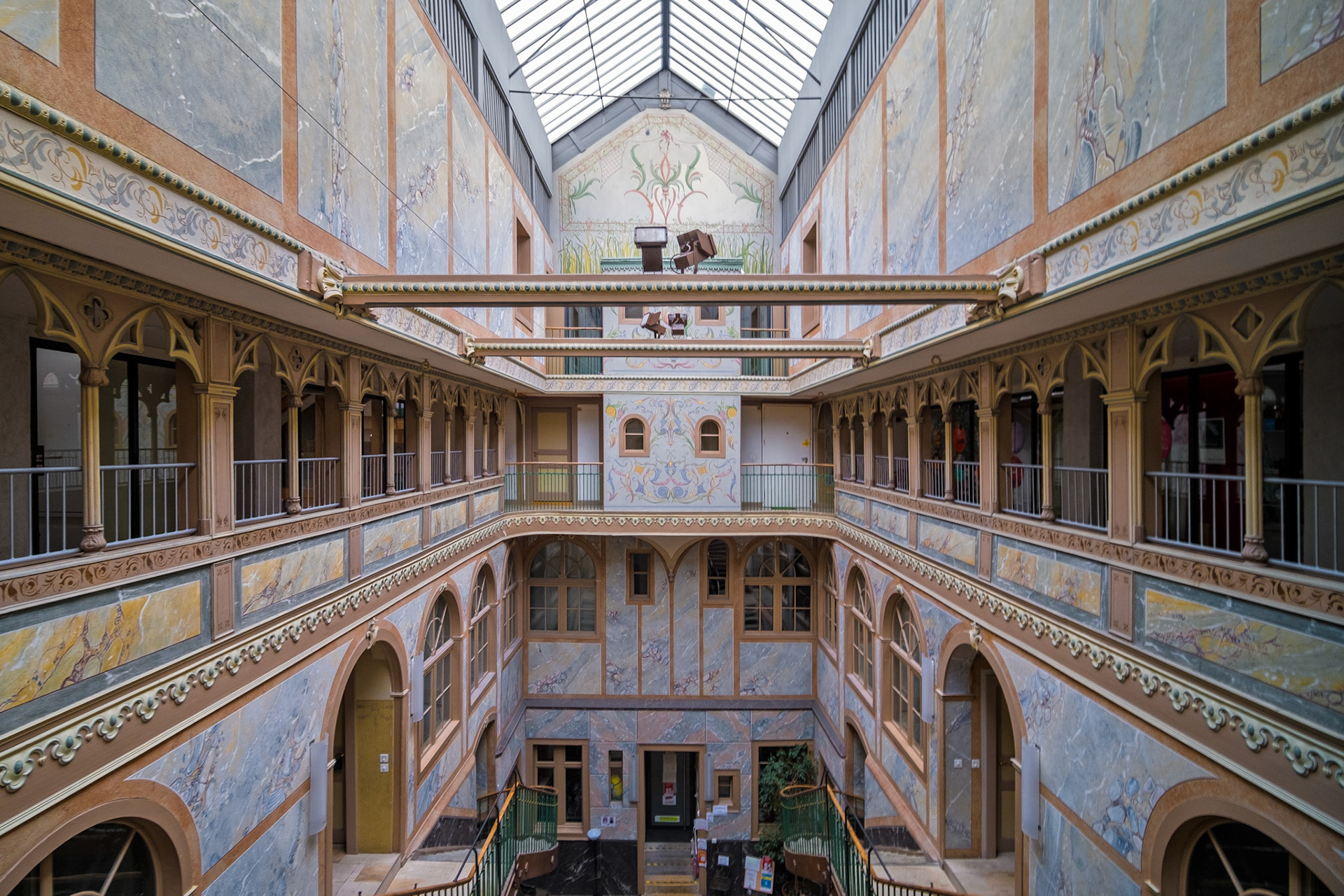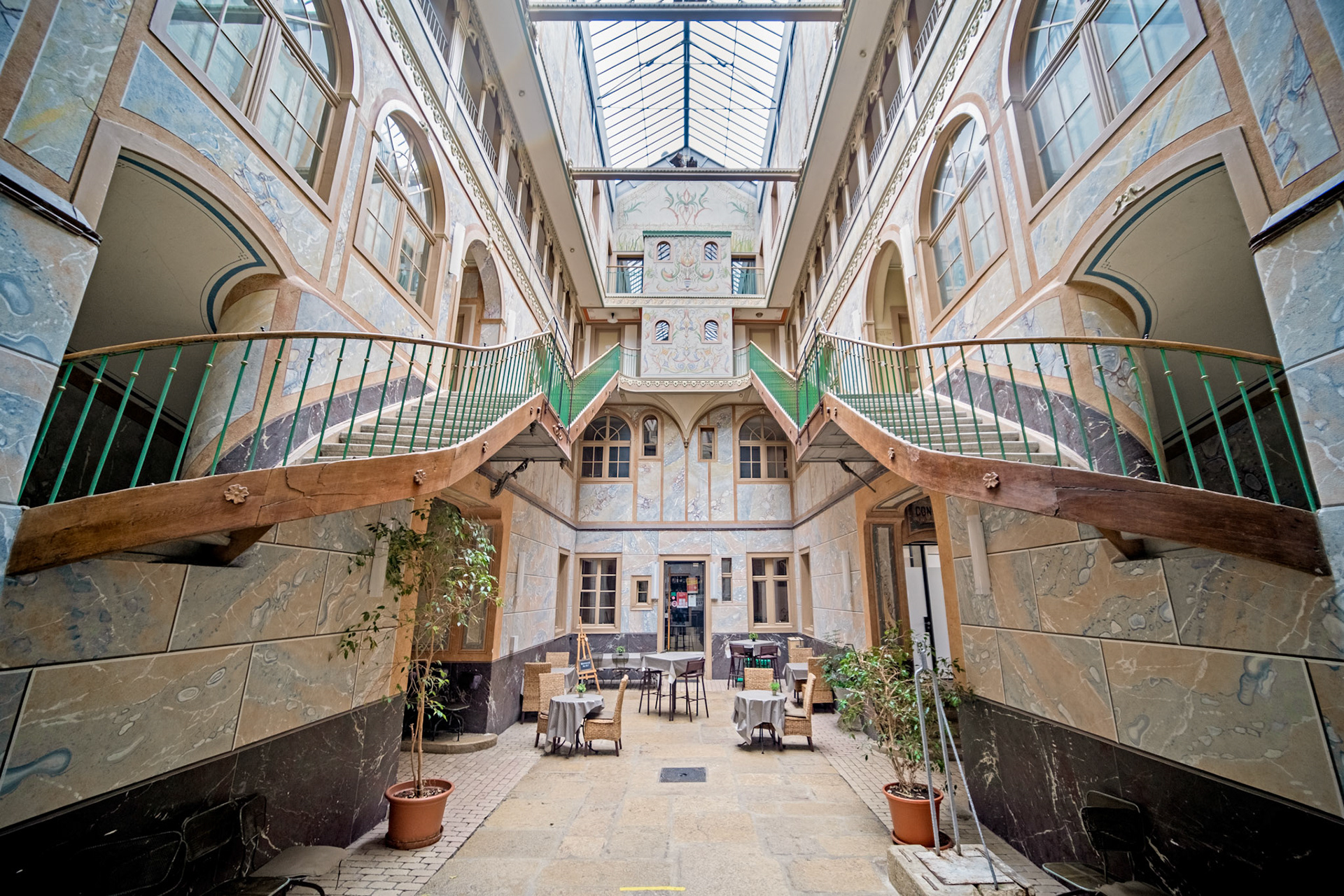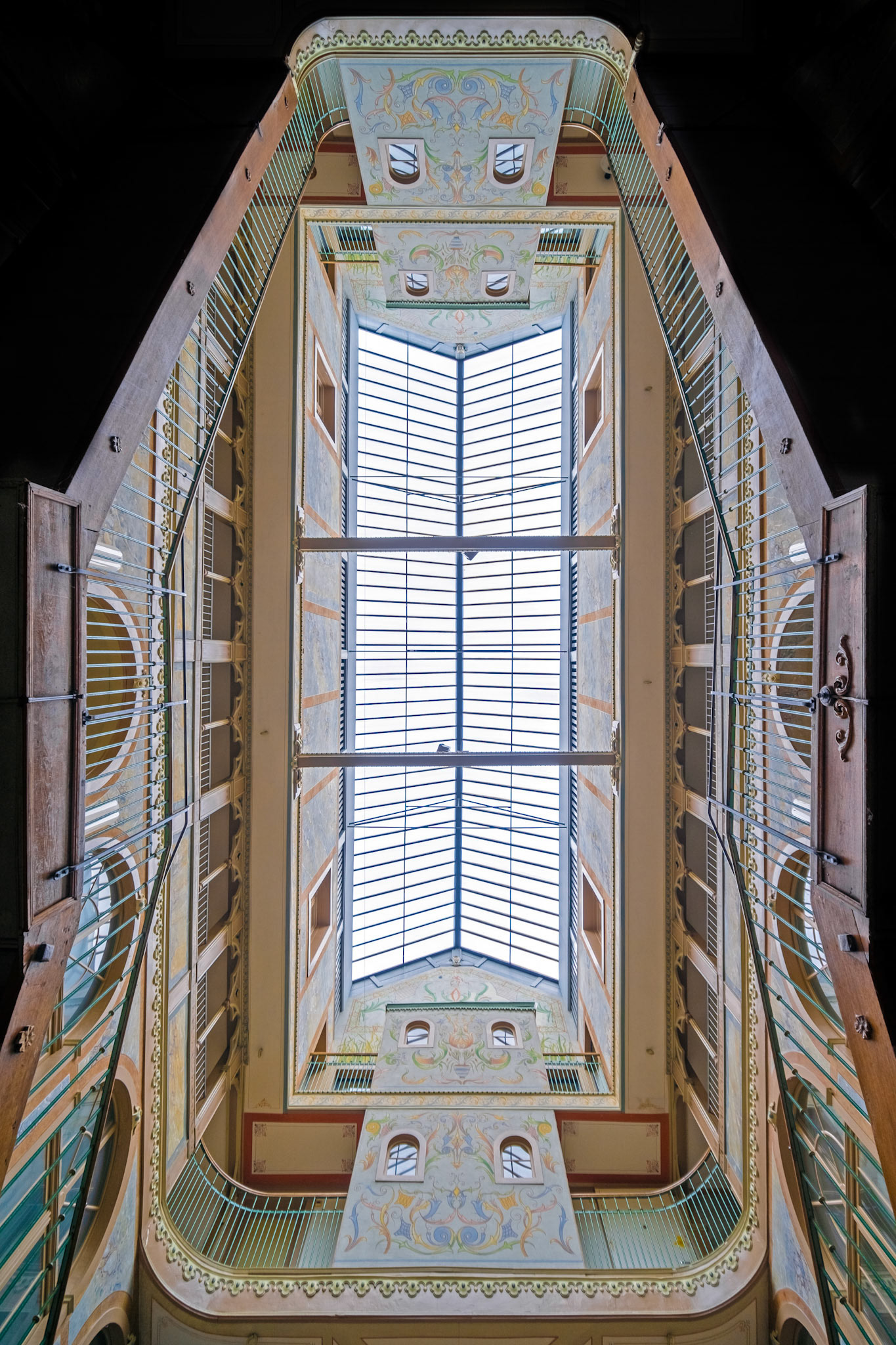In 1855, the Société du Manège united around a hundred people to construct the necessary infrastructure for practicing horse riding in La Chaux-de-Fonds. Designed by Frédéric Lang, the Manège, a rectangular hall measuring 35 by 20 meters, was inaugurated on July 31, 1857.
Over the following years, the Manège hosted not only horse riding but also circus shows, festivities, and political rallies. However, these activities proved financially unsustainable, leading to the building's sale in 1864 to Gustave-Emmanuel Boch. During this period, La Chaux-de-Fonds had become the main center of Swiss watch production, with its population rising from 12,000 in 1850 to 21,000 inhabitants in 1870, driving a surge in demand for new housing. Consequently, Boch decided to transform the Manège into an apartment complex, with construction taking place between 1867 and 1869. The decoration of the interior courtyard, which we see today, dates from 1902 and is the work of Jean Bruno.
The building faced the threat of demolition in the early 1980s to make way for new constructions. In 1983, the Société Coopérative de l’Ancien Manège (SCAM) was founded with the goal of preserving this architectural gem. SCAM successfully purchased the building in 1985, paving the way for its renovation.
The inner courtyard is adorned with faux marble and vegetal motifs, creating an elegant and lush atmosphere. The second level showcases neo-Gothic arcades.

neo-Gothic arcades on the second floor of the Ancien Mangège, La Chaux-de-Fonds
One of the most striking features are the symmetrically arranged staircases. Beginning at the ground floor, these staircases integrate into the lateral walls, then re-emerge between the floors, before leading to the second and third levels. The banisters, painted in bright green and embellished with gilded details, further enhance the visual appeal.

Ancien Mangège, La Chaux-de-Fonds - staircases
